sourdough hunkered along a stream, scrutinizing his pan for pay dirt. A line of cheechakos ascending the Chilkoot Trail, each one hoping to strike it rich with a Klondike claim. The Three Lucky Swedes pulling nuggets out of Nome’s golden sands, triggering the rush of 1899. Rugged individuals are the foundation of mining in Alaska, now often overshadowed by “elephants” like Red Dog and Fort Knox. Yet small companies and prospectors are still out there, exploring the landscape for the next big lode.
The physical properties of gold make the metal particularly suitable for small-scale mining. Being denser than the surrounding rock (known as gangue), gold tends to settle while the worthless grit is washed away with water, a method in use since ancient times. Gold’s luster also makes it easy to spot visually, with no modern chemical analysis necessary. Of course, that glitter is also what makes gold a sought-after rock, imbuing it with monetary value that rewards miners’ efforts, even when the find is merely dust or flakes.
Better known these days for its snowmachines and boats, Alaska Mining & Diving Supply got its start, as the name suggests, by selling dredges to gold prospectors.
Kerry Tasker
Since 1914, the Livengood prospect north of Fairbanks has been picked over by gold seekers, but the discovery of a new lode in 2007 is spurring development.
Livengood Gold Project
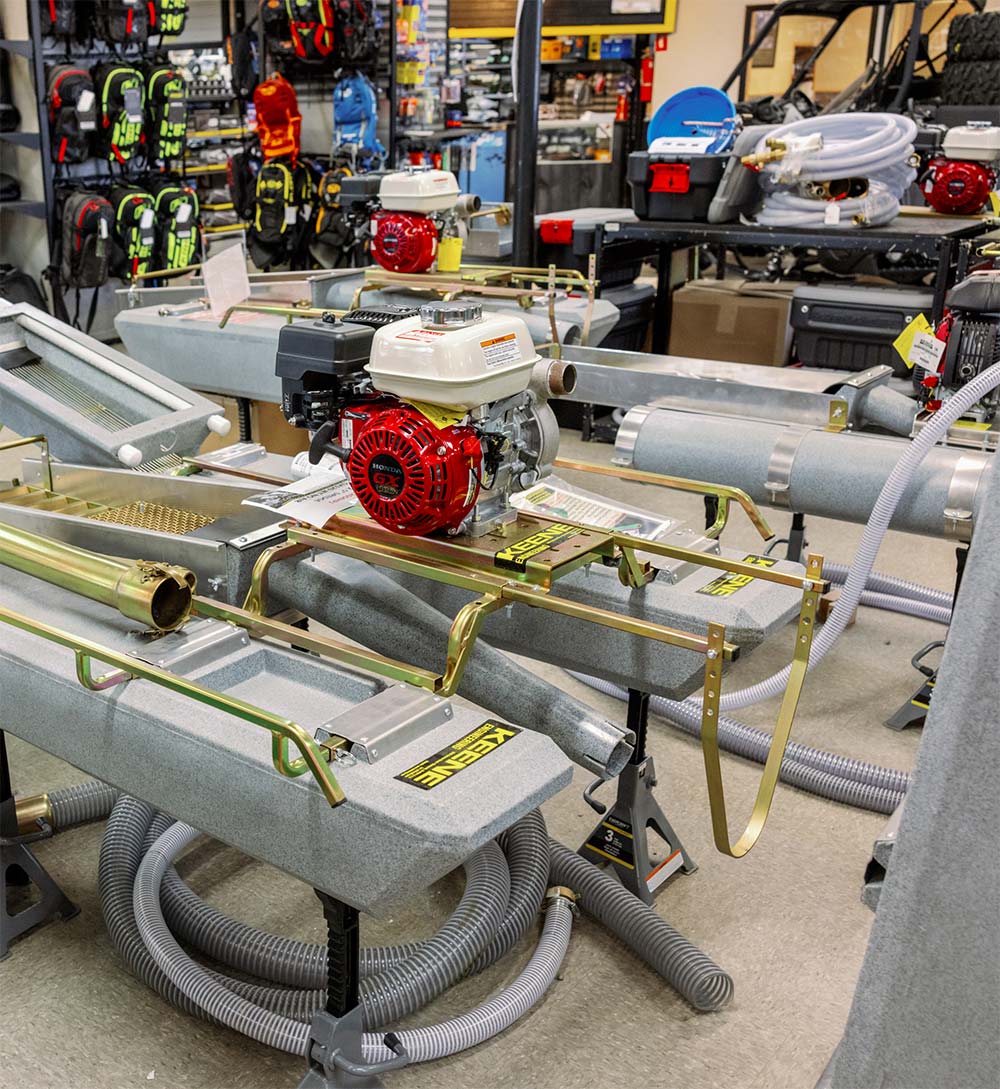
Better known these days for its snowmachines and boats, Alaska Mining & Diving Supply got its start, as the name suggests, by selling dredges to gold prospectors.
Kerry Tasker
Livengood Gold Project
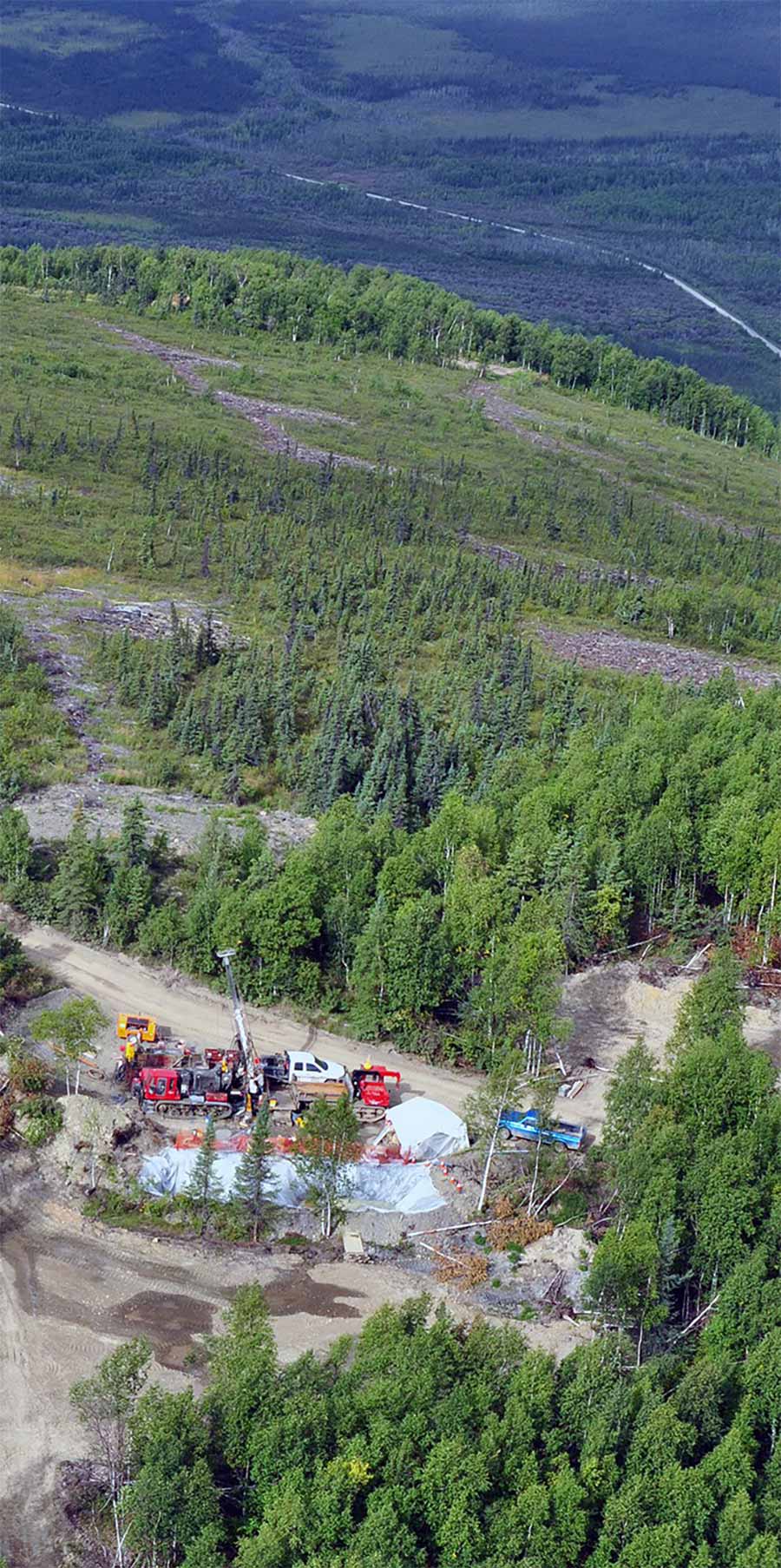
Herschbach turned his hobby into a business, thanks to his school buddy, Dudley Benesch, sharing an interest in gold prospecting. In 1976, they started selling gold dredges and the diving gear needed to operate them underwater, only later expanding into boats and snowmachines. Herschbach now lives in Nevada and operates the Detector Prospector website while rockhounding in the high desert.
Despite his efforts to continue the tradition of grizzled gold panners, Herschbach concedes that serious prospecting these days is dominated by multinational corporations. “They have large budgets and can employ methods beyond the reach of most individuals. To this day, however, they do rely on individual prospectors to do basic work that often results in finds.”
Small Companies, Big Results
From small stakes, huge payoffs may follow—though it takes time. The Livengood prospect, 70 miles north of Fairbanks, had been picked over by placer miners since 1914. More intensive exploration began in 2003, and not until 2007 was a new lode discovered, which would outstrip every small placer miner combined: potentially 11.4 million ounces of gold. Tower Hill Mines has invested more than $200 million already, completing a pre-feasibility study in 2017. The Livengood project is now in the advanced exploration stage. Before production begins with potentially more than 300 jobs, Tower Hill Mines gets by with just four workers on its payroll.
Co-founder
Alaska Mining & Diving Supply
A few blocks east of Tectonic Metals (use an alley as a shortcut) is the downtown Vancouver base of Blackwolf Copper and Gold, across the street from Red Dog Mine operator Teck Resources. Like HighGold, Blackwolf considers an Alaska property to be its flagship. The Niblack project on Prince of Wales Island is now in the advanced exploration phase for a possible underground mine. Niblack has seen considerable investments in infrastructure, including more than 120,000 meters in drilling and an 850-meter-long exploration tunnel with 150 meters of cross cuts that should help with drilling and potential production (they’re also in the process of building a new camp facility). According to Blackwolf’s website, the project is “located at tide water where ore could conceivably be barged to a central processing facility at low cost.” Ultimately the company hopes to identify copper, zinc, gold, and silver.
Kerry Tasker
Kerry Tasker
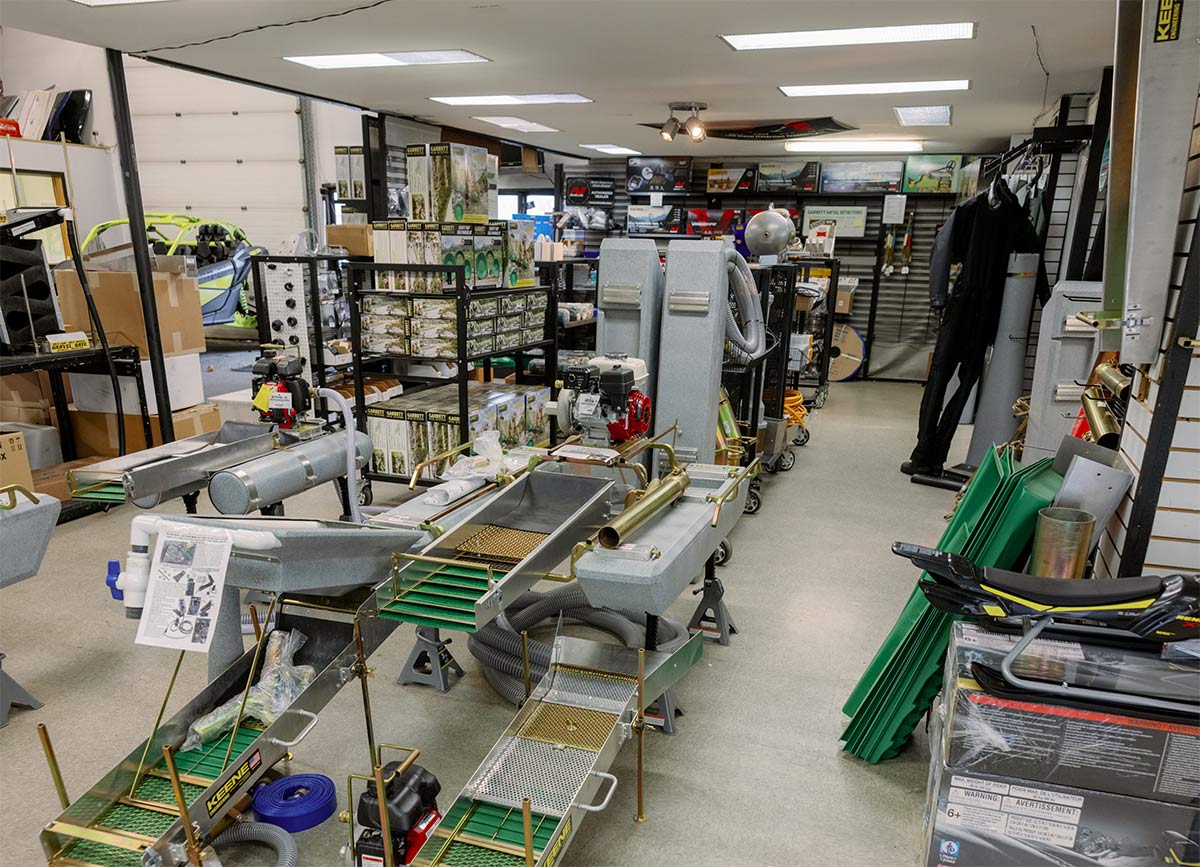
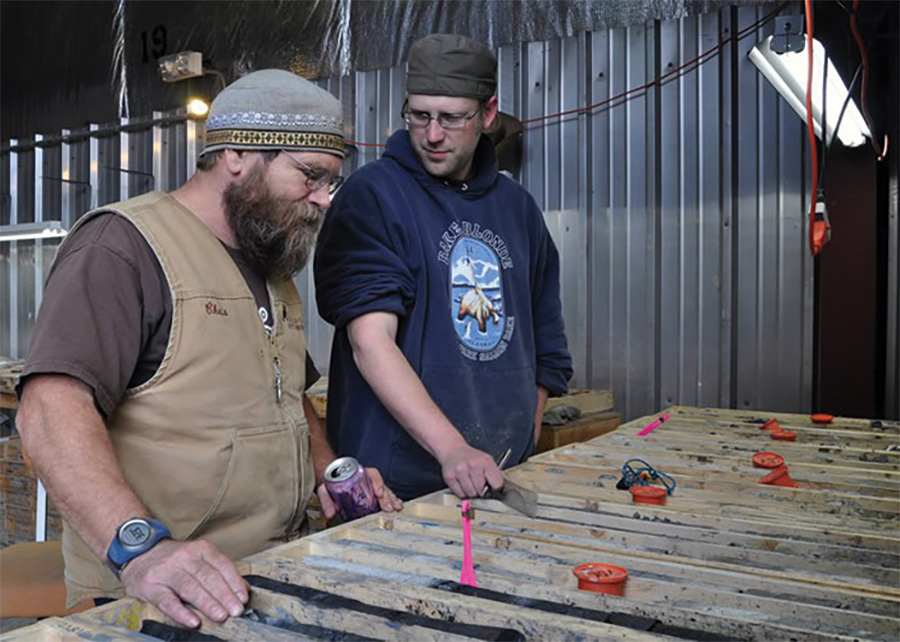
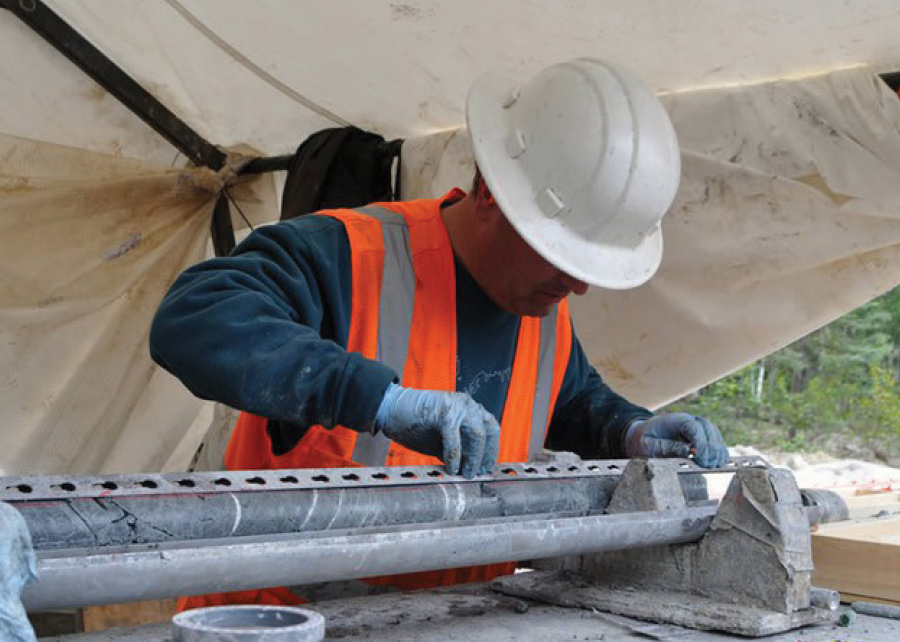
Geologists study a drill core test from the Livengood prospect.
Livengood Gold Project
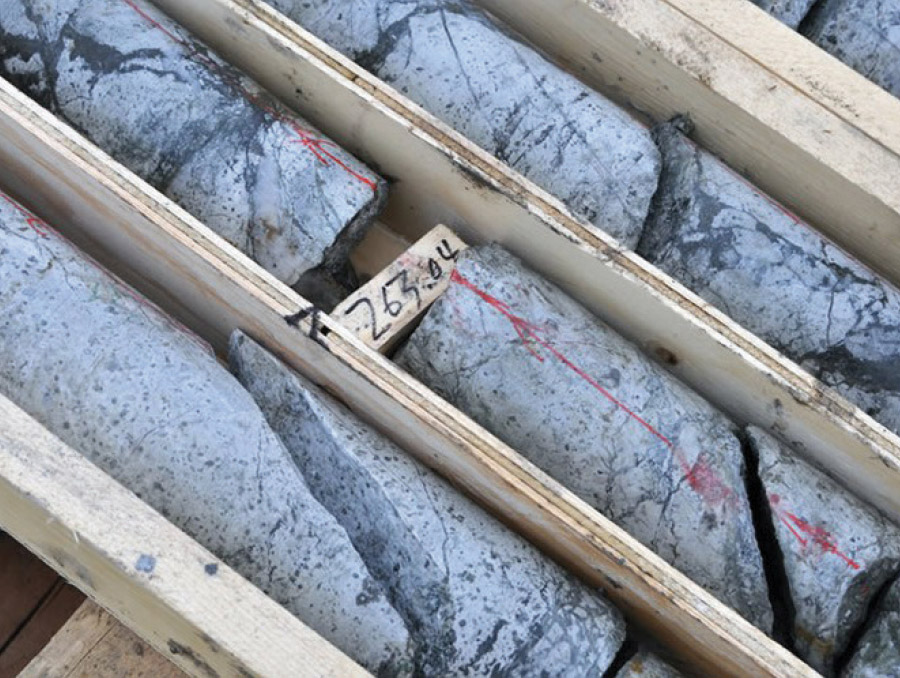
Geologists study a drill core test from the Livengood prospect.
Livengood Gold Project
Headquartered in Ballarat, inland from Melbourne, White Rock Minerals has just eight employees in its office. The small firm is mainly interested in a domestic gold and silver deposit called Mt. Carrington, but it also explores in Alaska, with contractors hired out of a branch in Juneau. Exploration in the Bonnifield Mining District, about 60 miles south of Fairbanks, includes 1,298 mining claims that are rich in zinc, silver, gold, copper, and lead. It’s not the first time deposits have been discovered: previous exploration had found minerals in Dry Creek and West Tundra Flats, but there hasn’t been much modern exploration of the area, a point that the company believes means there’s potential.
The international reach of mining corporations in the 21st century has replaced the quaint tales of immigrants like Felix Pedro or the Three Lucky Swedes making their fortunes in the Last Frontier. And lone prospectors like Herschbach see no end in sight. “The biggest problem is rules that are written for billion-dollar companies but which do not differentiate between that huge company and much smaller operators,” he says. “I wish more was done to separate regulations applying to the largest from the smallest.”
Big or small, mining exploration at a range of sizes has a place in Alaska. For every Pebble or Donlin Creek, there are a hundred smaller prospects that never make headlines. In an industry that measures output in ounces, every little bit adds up. ![]()